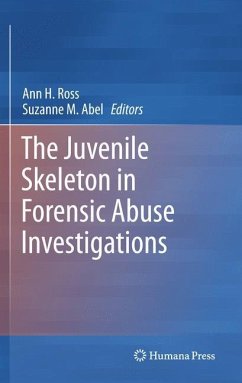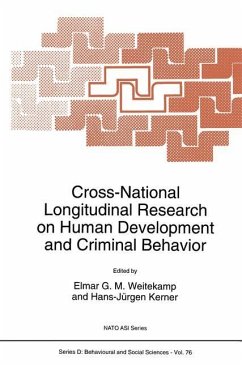
Fundamentals of Forensic Anthropology

PAYBACK Punkte
77 °P sammeln!
Fundamentals of Forensic Anthropology is the first forensic anthropology textbook to be published in the last twenty years. With a focus on the last ten million years of human history, it draws upon fossil records to shed light on key scientific issues, principles, methods, and history in paleonanthropology. It presents the foundations of the practical science as well as a guide to evaluation and use of the primary literature.
An essential foundation for the practice of forensic anthropology
This text is the first of its level written in more than twenty years. It serves as a summary and guide to the core material that needs to be mastered and evaluated for the practice of forensic anthropology.
The text is divided into three parts that collectively provide a solid base in theory and methodology:
_ Part One, "Background Setting for Forensic Anthropology," introduces the field and discusses the role of forensic anthropology in historic context.
_ Part Two, "Towards Personal Identification," discusses initial assessments of skeletal remains; determining sex, age, ancestral background, and stature; and skeletal markers of activity and life history.
_ Part Three, "Principal Anthropological Roles in Medical-Legal Investigation," examines trauma; the postmortem period; professionalism, ethics, and the expert witness; and genetics and DNA.
The critical and evaluative approach to the primary literature stresses the inherent biological constraints on degrees of precision and certainty, and cautions about potential pitfalls. The practical focus, coupled with theoretical basics, make Fundamentals of Forensic Anthropology ideal for upper-level undergraduates and graduate students in biological anthropology as well as forensic scientists in allied fields of medical-legal investigation.
This text is the first of its level written in more than twenty years. It serves as a summary and guide to the core material that needs to be mastered and evaluated for the practice of forensic anthropology.
The text is divided into three parts that collectively provide a solid base in theory and methodology:
_ Part One, "Background Setting for Forensic Anthropology," introduces the field and discusses the role of forensic anthropology in historic context.
_ Part Two, "Towards Personal Identification," discusses initial assessments of skeletal remains; determining sex, age, ancestral background, and stature; and skeletal markers of activity and life history.
_ Part Three, "Principal Anthropological Roles in Medical-Legal Investigation," examines trauma; the postmortem period; professionalism, ethics, and the expert witness; and genetics and DNA.
The critical and evaluative approach to the primary literature stresses the inherent biological constraints on degrees of precision and certainty, and cautions about potential pitfalls. The practical focus, coupled with theoretical basics, make Fundamentals of Forensic Anthropology ideal for upper-level undergraduates and graduate students in biological anthropology as well as forensic scientists in allied fields of medical-legal investigation.












